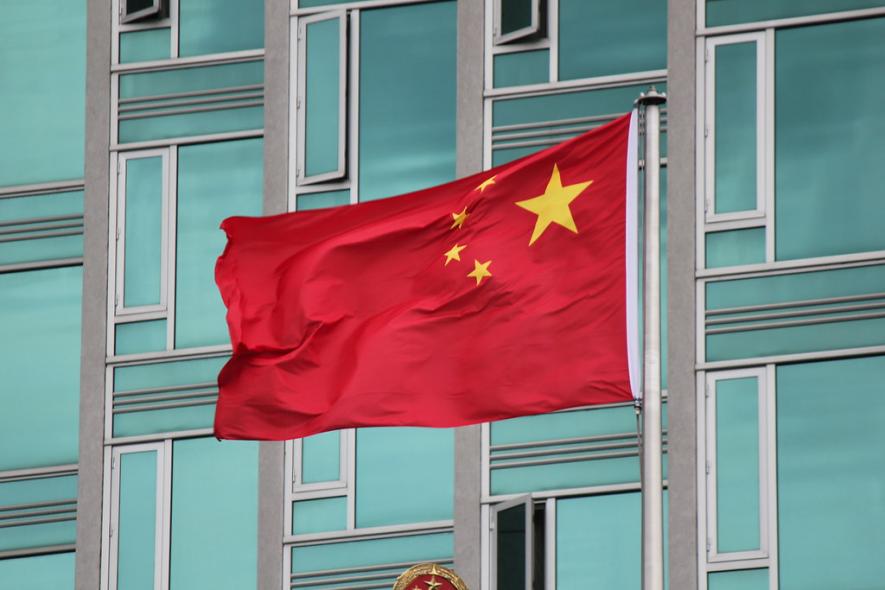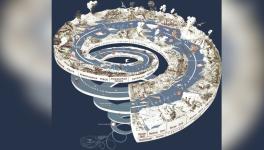China Learned From US How to Outperform American Capitalism

Image Courtesy: Flickr
US capitalism was, in certain ways, the world’s most successful capitalism until recently. Better than the capitalist systems of Britain, Germany, and Japan, US capitalism avoided two key traps. First, it found a remarkable way to manage the capitalist-worker class struggle for a long time before it lost that capacity. The United States also found a way to organise its imperial rule without the overt colonialism that provoked rising resistance that eventually became too costly and unmanageable for Britain, Germany, Japan, and other colonial powers. But in recent decades, US capitalism failed to manage its class struggles or to reverse the decline in its informal imperialism.
Chinese leaders have learned, implicitly or explicitly, from how US capitalism lost those capacities. Thus, China organised both its employer-employee relationships and its international linkages differently. By doing so, the Chinese economy is ascending while that of the US is descending. The process is, of course, uneven; the differences between the US and China vary. But the general pattern and direction remain the same: China up and the US down.
From 1820 to the 1970s, US capitalism employed a fast-growing number of workers and paid them a real wage that grew every decade until the 1970s. That remarkable performance enabled, validated, and combined with a culture that emphasised consumption (the positive) as the compensation for labour (the negative).
The combination blunted the appeals of dissidents, radicals, socialists, and other critics of capitalism until the 1930s. Productivity grew across the 150 years even faster than real wages and boosted profits rapidly. The United States outperformed other capitalisms in both the profits accruing to the employer class and the real wages flowing to the employee class.
The 1929 stock market crash and the 1930s Great Depression were the exceptions that proved the rule. US capitalism then broke down, as did its promises of prosperity and growth. Fearful of a collapse, the US employer class—via former US President Franklin Delano Roosevelt’s Democratic Party—offered a deal, which was an alliance of sorts to the employee class.
The deal was brokered by capitalism’s leading critics then: the Congress of Industrial Organizations (CIO) plus two socialist and one communist party. Together, employers and employees produced the New Deal, and a political lurch to the Left undid a good part of the economic inequalities built up in the United States before 1929. It was a “great reset” that, with World War II, enabled a resumed upward arc of US capitalism. Moreover, that arc took on an added imperial dimension when World War II undermined the old formal colonial empires, allowing the US state to move quickly to replace them informally.
But the US employer class made a huge strategic blunder after the end of the Roosevelt era and World War II. It failed to recognise how the Left’s strength in the 1930s had inadvertently saved US capitalism via the “great reset.” The New Deal was in large part a “trickle-up” Keynesian stimulus, unlike the traditional “trickle-down” economic policies of US governments, past and present. It brought the US out of the Great Depression while reducing income and wealth inequality unlike the decades before and after.
But, blinded by the fear of and rage at paying taxes to fund the New Deal and other similar reforms, the rise of a strong US Left, and World War II’s US alliance with the USSR, the employer class determined to roll all that back after 1945. Chiefly via its Republican Party wing, the employer class set itself the task of undoing the New Deal by destroying the coalition that created it (CIO plus socialists and communists). The employer class successfully wrecked that coalition and each of its components. However, that wreckage also reoriented US capitalism onto a trajectory that ended its 150 years of ascendancy.
By the 1970s, the reset stalled. US employers had so vanquished labour and the Left that they indulged opportunities to enhance profits without fear of or even much concern about employee reactions. Many US employers relocated their production abroad where wages were far lower, making the US companies’ profits much higher. Many more employers in the US undertook rapid automation. New immigration policies were waved in. Good proletarian jobs gave way to the precariat that today’s younger generations take bitterly for granted. Instead of real wage gains across every decade from 1820 to 1970, the last 50 years saw real wages stagnate alongside deepening household debt.
Thus, the 21st century’s cycles have been progressively larger and harsher, rivaling that of the 1930s. Yet, no comparable political Left shift has occurred, no revival of a movement yet along the lines of the New Deal Coalition. This time, a deep crisis yields no massive “trickle-up” policy component. Income and wealth inequalities continue to worsen. No Left-led reset is occurring to save US capitalism from sinking into ever deeper economic, social, and cultural conflicts.
Meanwhile, many policymakers in China have drawn lessons from the US experience: which policies to replicate and which policies to discard. China saw that US capitalists had often worked closely with the US state successfully to undertake major projects by coordinating and mobilising public and private resources. These included fighting a century of wars to subordinate, evict, or exterminate the Indigenous population, waging wars of independence from Britain in 1776 and 1812, ending a competitive slave economy in the US South via civil war, undertaking infrastructure capitalists needed to grow (such as canals and railroads), advancing US capitalists’ interests in and the subsequent recoveries after World Wars I and II, and replacing the old colonialism systems after 1945 and substituting US global military, economic, and political dominance.
In China, economic policymakers also have taken note of when weaknesses and reverses afflicted US capitalism. The relatively unregulated capitalism after World War I eventuated in the 1929 crash. Likewise, the deregulated (“neoliberal” or “globalized”) capitalism after the 1970s eventuated in the 2008 crash. Refusing national health insurance enabled a private medical-industrial complex to overcharge and slow US capitalism to benefit from its excess profitability. It also underprepared the United States for the COVID-19 pandemic with catastrophic results.
More generally, China concluded that in the US, achieving prioritised social goals happened more when public and private resources were coordinated and focused to do so. China also observed that wars and economic crises often produced this coordination and focus in the US. The logical inference by economic observers in China was to consider that a continuous programme of coordination and focus could more generally outperform what the US had achieved with its merely occasional programme.
That conclusion fits nicely also into China’s conception of socialism with Chinese characteristics. In that conception, a strong Communist Party and the state it controls secure the continuous programme of coordination and focus of a system that mixes private and public enterprises. China’s economic leaders attribute to that continuous programme an impressive annual GDP growth rate record. From 1977 to 2020, China’s average annual GDP growth rate (9.2%) was well over three times higher than the US record (2.6%).
The average real wage in China has also steeply risen in recent years, which the country points to as another success of its economic system. In contrast, US real wages have stagnated recently. The superiority of the recent Chinese record over that of the United States is persuasive evidence for China to continue its policy. China learned from the United States how to outperform US capitalism.
Karl Marx once wrote that no economic system disappears until it has exhausted all its possible forms. If one understands economic systems, with Marx, as particular ways to organise the human relations of production, then capitalism is that way that juxtaposes employers versus employees. The United Kingdom, but especially the United States, developed that economic system with a strong emphasis on its private enterprise forms.
The USSR developed that system with a strong emphasis on its public enterprise forms. China, meanwhile, developed that economic system by mixing private and public enterprise forms (as Scandinavia and Western Europe also did), but with an emphasis on strong central control to coordinate and mobilise both private and public enterprises to achieve prioritised social goals.
China may thus be where the capitalist system reaches the fullest potential of its various forms—exhausts them in that sense—and thus prepares the way for a transition beyond capitalism.
Richard D. Wolff is professor of economics emeritus at the University of Massachusetts, Amherst, and a visiting professor in the Graduate Program in International Affairs of the New School University, in New York.
Source: Independent Media Institute
Credit Line: This article was produced by Economy for All, a project of the Independent Media Institute.
Get the latest reports & analysis with people's perspective on Protests, movements & deep analytical videos, discussions of the current affairs in your Telegram app. Subscribe to NewsClick's Telegram channel & get Real-Time updates on stories, as they get published on our website.
























